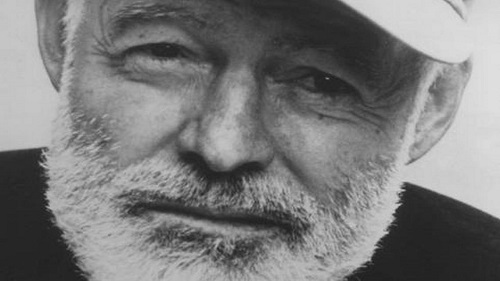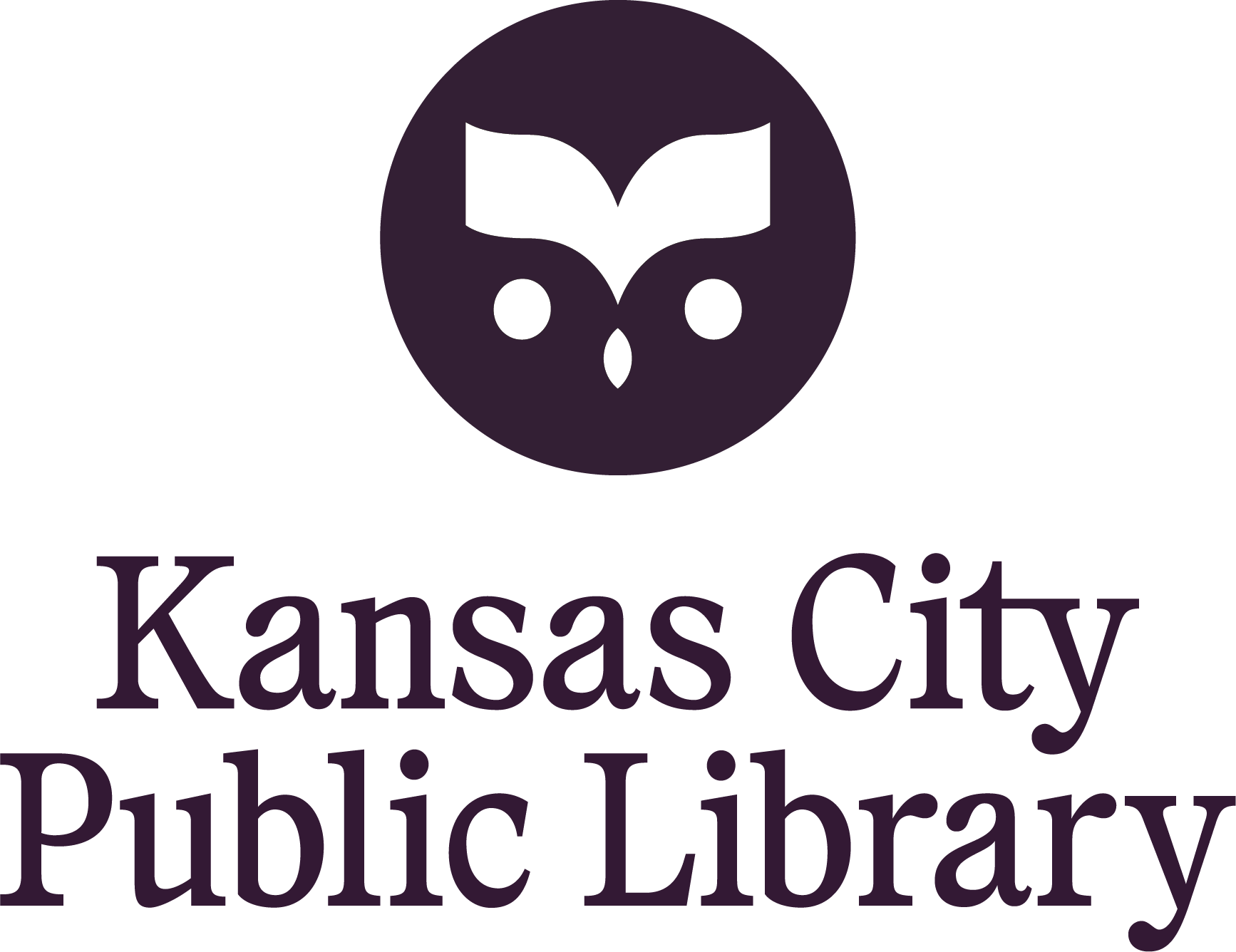Which book did Ernest Hemingway write in a Johnson County bedroom? How KC inspired the author
“What’s your KC Q” is a joint project of the Kansas City Public Library and The Kansas City Star. Readers submit questions, the public votes on which questions to answer, and our team of librarians and reporters dig deep to uncover the answers.
Have a question you want to ask? Submit it now »
by Kynala Phillips

In the late 1990s, reader Sara Prem was living in Lenexa, Kansas when she took a Kansas City history bus tour that passed a home in Mission Hills. Her tour guide pointed out a window in the home and said that American literary icon Ernest Hemingway wrote one of his novels from that bedroom.
“I no longer remember which novel,” Prem said in an email. “I was hoping you could find that out and a little more of the story of how (if it is true) Hemingway came to be writing in a bedroom in Mission Hills, Kansas.”
This week, KCQ dug into a bit of Hemingway’s connections to Kansas City. It is true that he wrote pages of his novel A Farewell to Arms while in Kansas City. We don’t know exactly how many of those pages were actually written in that Mission Hills home, according to Steve Paul, author of Hemingway at Eighteen, but we know he did spend time there during the summer he was working on the book.
In June 1928, Hemingway and his second wife Pauline likely stayed with their aunt Arabella White Hemingway at her Mission Hills home at the Northwest corner of 55th Street and State Line Road, according to Paul.

The couple previously lived in Piggott, Arkansas, but decided to travel to Kansas City for the birth of their son, Patrick.
However, Paul said that Hemingway’s aunt Arabella “was not very fond of Ernest,” so he and his family spent a lot of time at his cousin’s house that summer as well, which was also in Mission Hills at 6435 Indian Lane.
By July, the Hemingway family returned to Arkansas. Hemingway didn’t complete A Farewell to Arms until September, while staying in Wyoming.
How Hemingway got to Kansas City, and to The Star
Hemingway’s time in Kansas City, though not as significant as some other places he lived, was an important part of the author’s journey and a recurring mention in his novels. He made references to the City of Fountains in books like Across the River and into the Trees, Death in the Afternoon, For Whom the Bell Tolls, A Moveable Feast and The Sun Also Rises and A Farewell to Arms.
Before he became a literary icon, Hemingway was just a budding reporter. When he graduated high school outside of Chicago in June 1917, his family didn’t want him to go to war, and so his uncle helped the new graduate land an apprenticeship at The Kansas City Star.
That fall, Hemingway left his home for Kansas City, where he worked for The Star for about six months—from October 1917 to April 1918. It was his longest stint in the city.
“He had these meaningful experiences as a teenager, as a young adult, first breaking away from his home, [Kansas City] became important in that way,” Paul said.
Those experiences would creep back up in Hemingway’s work throughout the years. In some works, like his 1937 novel For Whom the Bell Tolls, characters like Robert Jordan, even mirrored Hemingway’s own life as a cub reporter starting a new life in Kansas City.
As a young reporter, Hemingway covered the 15th Street police station, Union Station and the General Hospital. In 1940, he referred to the lessons he learned at The Star as “the best rules I ever learned for the business of writing,” according to a 1999 Star article by Paul on Hemingway’s time in Kansas City.
At the time, Hemingway was only 18 years old. While strengthening his skills as a writer, he also got to explore a pre-prohibition hotspot as an adult for the first time.
“There was a lot of drink and drugs and crime and Hemingway sort of reveled in this sort of the dark side of the city,” said Paul, who is also a former editor and columnist for The Star.
Although Hemingway would go on to spend much more time in places like Paris and Cuba, his time in Kansas City marked the beginning of his formative years and introduced a number of themes, like violence and humanity, in his literary work, according to Paul.

Hemingway’s old haunts
During his time in Kansas City proper, Hemingway stayed in three different houses.
He stayed at a boarding house in Midtown at 3733 Warwick Blvd. In a letter to his family, he described the boarding house as “very disciplined, very exclusive,” according to a 2015 article in The Star.
He also visited his aunt and uncle Arabella and Alfred Tyler Hemingway, who lived down the street in a Victorian style home at 3629 Warwick Blvd. The building is no longer there, due to a fire, according to Paul. Arabella later built the home in Mission Hills that was mentioned earlier.
Lastly, in late 1917, he eventually moved to 3516 Agnes Ave., where he shared a big room with a friend.
To see a full list of places that Hemingway frequented and how he’s connected to each place, check out this guide here.
Hemingway returns
Hemingway left Kansas City in the spring of 1918 for World War I, where he volunteered to be an ambulance driver with the American Red Cross. Hemingway didn’t make his way back to the plains until 1928 for the birth of his son Patrick, when he was writing “A Farewell to Arms” and staying in Mission Hills.
In 1931, Hemingway returned to Kansas City for the birth of his third son Gregory. Hemingway stayed in Kansas City off and on after the birth of Gregory, spending time in places like Arkansas, Wyoming and Florida.
Paul said that Hemingway casually stopped by Kansas City from time to time over the years, but his last known visit was in 1940 after the release of his civil war-inspired book For Whom the Bell Tolls.
“They stopped in Kansas City, and Hemingway was interviewed by a reporter for the paper. And there was this famous ‘back in Kansas City’ story in late November of 1940,” Paul said.
“There's no real kind of physical connection to Kansas City after about 1940.”

Where to learn more about Hemingway’s Kansas City
To learn more about how Kansas City appears in Hemingway’s literary work, check out this literary tour of Hemingway’s connections to Kansas City, here. To explore Hemingway’s world in real life, here is a guide on all the places he lived and visited while in Kansas City.
For a more in depth look at how his time in Kansas City impacted his work as a writer and storyteller, check out this 1999 article “Hemingway’s Kansas City: A short story” by Steve Paul or check out Paul’s book Hemingway at Eighteen: The Pivotal Year That Launched an American Legend.
Submit a Question
Do you want to ask a question for a future voting round? Kansas City Star reporters and Kansas City Public Library researchers will investigate the question and explain how we got the answer. Enter it below to get started.


